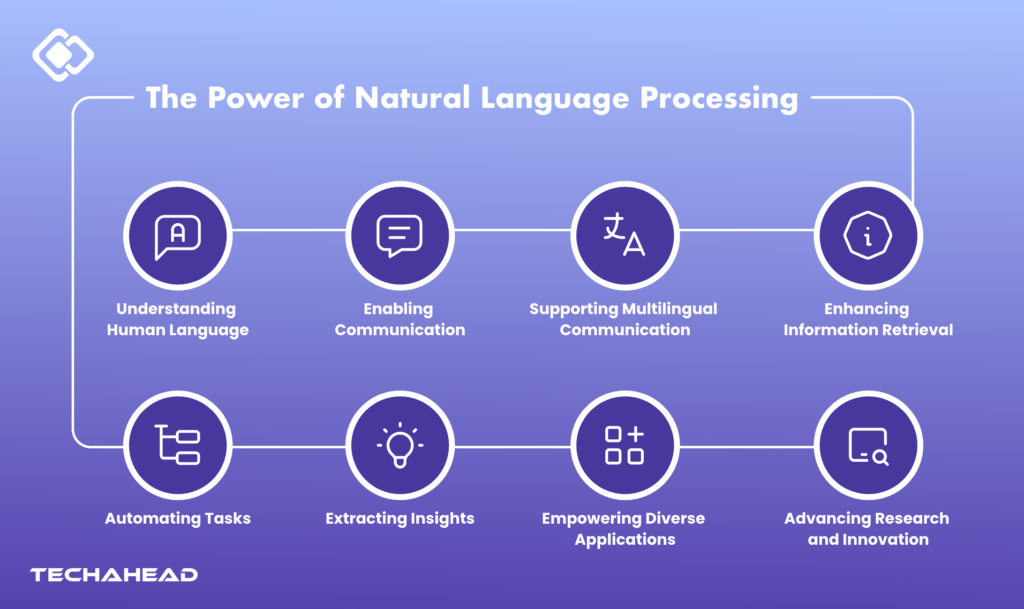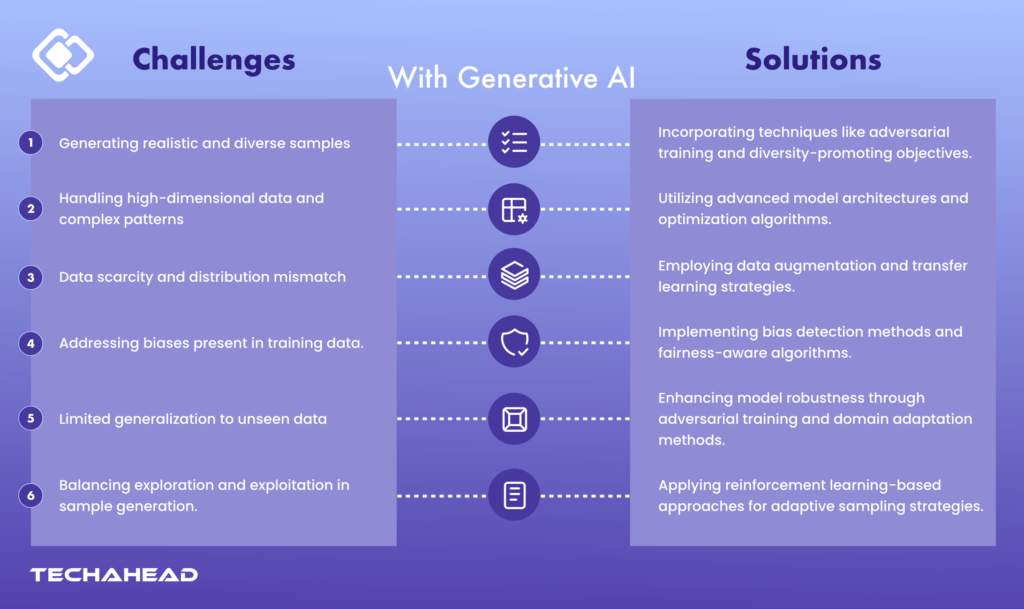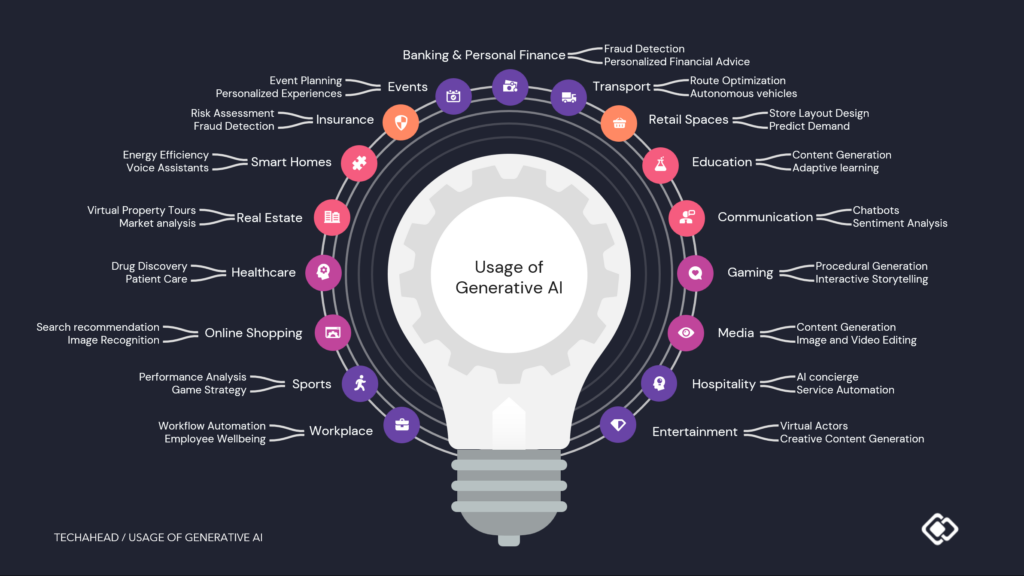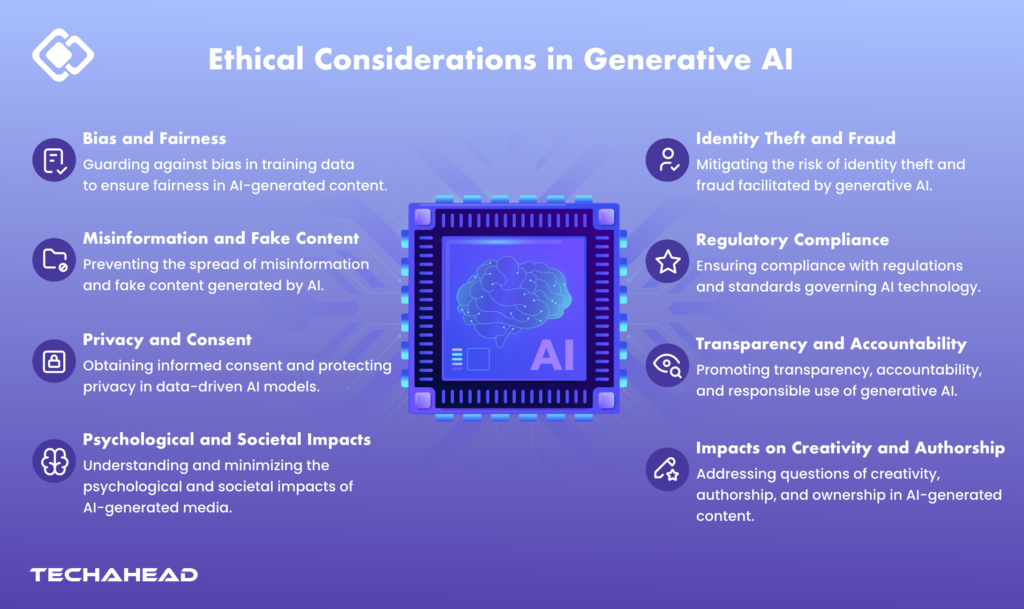
Imagine a world where AI creates breathtaking artwork, composes symphonies, designs life-saving drugs, and automates business processes with ease. This is not a glimpse into a distant future; it’s happening now with the power of generative AI, and many other next generation AI models making their debut.
As this technology evolves, it unlocks new possibilities and challenges in various domains. In this comprehensive guide, we explore the fascinating world of “what is generative AI,” its models, applications, ethical considerations, and the steps involved in building and training generative models.
Key Takeaways
- Generative AI is an incredibly powerful form of artificial intelligence that leverages generative AI tools to generate diverse content types.
- Generative Adversarial Networks (GANs) and Variational Autoencoders (VAEs) are key components of generative AI systems, enabling the creation of realistic content.
- Generative AI has a range of applications, from art and music to healthcare and business process automation, but ethical considerations must be addressed when using this technology.
Evolution
Generative AI is a form of artificial intelligence that leverages a variety of generative AI tools to generate diverse content types such as:
Text
Images
Audio
Virtual data
These content types are created using a generative AI model, which is the underlying technology responsible for the generation process.
It is an incredibly powerful and versatile technology. This cutting-edge technology has been around since the 1960s with the development of chatbots. Since then, it has evolved, and with the advent of deep learning and face recongnition in 2010, deep generative models have emerged as a significant area of AI research and development.
Unlike predictive AI, which uses historical data to foresee outcomes, generative AI generates new content based on data patterns. In contrast, as a type of artificial intelligence (AI), fabricates new content based on patterns in data.
Key components of generative AI systems include unsupervised or semi-supervised learning, deep learning models, and algorithms for content generation.
Natural language processing (NLP) is vital to generative AI, enabling text generation, manipulation, and conversation.
Understanding Generative AI
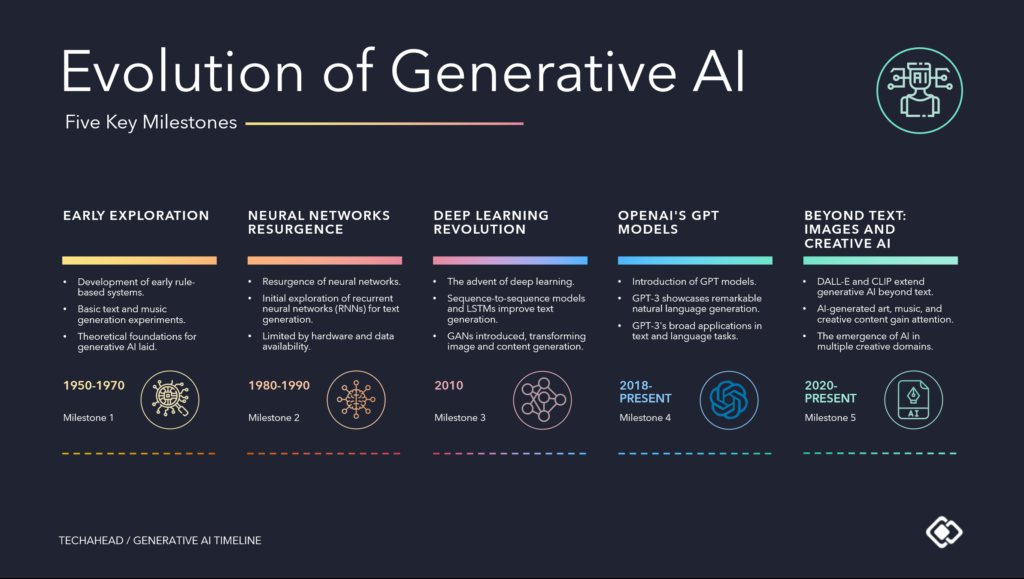
Generative AI is a form of artificial intelligence that leverages a variety of generative AI tools to generate diverse content types such as:
-
- Text
-
- Images
-
- Audio
-
- Virtual data
These content types are created using a generative AI model, which is the underlying technology responsible for the generation process.
It is an incredibly powerful and versatile technology. This cutting-edge technology has been around since the 1960s with the development of chatbots. Since then, it has evolved, and with the advent of deep learning and face recognition in 2010, deep generative models have emerged as a significant area of AI research and development.
Unlike predictive AI, which uses historical data to foresee outcomes, generative AI generates new content based on data patterns. In contrast, a type of artificial intelligence (AI) fabricates new content based on patterns in data.
Key components of generative AI systems include unsupervised or semi-supervised learning, deep learning models, and algorithms for content generation.
Natural language processing (NLP) is vital to generative AI, enabling text generation, manipulation, and conversation.
The role of generative AI in machine learning

As a subset of machine learning, generative AI concentrates on generating new content like images, text, or audio.
While other forms of AI may focus on classification, prediction, or optimization, generative AI emphasizes creating novel content based on patterns in data.
Generative Adversarial Networks (GANs) are a type of machine learning algorithm that apply generative AI in action. This algorithm enables us to produce convincing audio, images, and videos of real people. Supervised learning is also playing a key role in advancing large language models and influencing interactions with generative models.
Key components of generative AI systems
Key elements of generative AI systems encompass unsupervised or semi-supervised learning, deep learning models, and algorithms for content creation. Unsupervised learning is particularly important, as it allows computers to identify patterns and structures in unlabeled datasets without any external guidance.
Additionally, semi-supervised learning combines labeled and unlabeled data, enabling the system to capitalize on the limited amount of labeled data and a larger quantity of unlabeled data, thereby enhancing the model’s performance and generalization capabilities.
Convolutional Neural Networks (CNN), Recurrent Neural Networks (RNN), and Generative Adversarial Networks (GAN) are commonly employed in generative AI. These models leverage neural networks to recognize patterns and structures in existing data to produce new and original conten
Exploring Generative AI Models
Generative AI models use various techniques to create new content, with Generative Adversarial Networks (GANs), Variational Autoencoders (VAEs), and Diffusion Models being some of the most popular approaches.
These techniques enable it to create realistic human faces, synthetic data for AI training, and even facsimiles of particular humans. It is essential to be aware that these methods may reproduce the partiality, racism, distortion, and exaggeration found in the original data. Therefore, it is imperative to consider this before implementation.
Generative Adversarial Networks (GANs)
Introduced by Ian Goodfellow in 2014, Generative Adversarial Networks (GANs) involve two neural networks competing against each other to generate realistic content.
GANs consist of encoders and decoders, and they have been instrumental in enabling generative AI to create realistic images, videos, and audio of real people. GANs have also been used in the development of AI-generated art tools, such as DALL-E, which links the meaning of words to visual elements.
Transformers, a form of machine learning, have enabled something called attention. This allows models to track the associations between words across multiple pages, chapters, and even books, rather than just in single sentences.
Variational Autoencoders (VAEs)
Variational Autoencoders (VAEs) employ probabilistic models to generate novel content by grasping the fundamental structure of the input data. They offer the essential capability to not only reconstruct data but to generate variations of the original data.
VAEs use an encoder network to map the input data to a latent space and a decoder network to reconstruct the data from the latent space back to the original input space.
During training, the encoding distribution in the latent space is regularized to guarantee that it follows a predefined distribution, usually a normal distribution. This regularization assists the VAE in learning a meaningful and structured representation of the input data.
Diffusion Models
Diffusion Models generate high-quality content by replicating a random walk through the data space. They simulate the data generation process through a diffusion process, whereby they learn a probabilistic mapping from a simple distribution to the target data distribution through iterative diffusion steps.
By simulating multiple random steps, diffusion models can generate trajectories that accurately resemble a random walk in the data space.
Transformers, such as Google’s Bidirectional Encoder Representations from Transformers (BERT) and OpenAI’s GPT, are revolutionizing the way neural networks encode language, images, and proteins and even generate new content. Google AlphaFold marks a major milestone in this development.
The Power of Natural Language Processing
Natural language processing (NLP) is a key aspect of generative AI. It enables AI systems to understand and respond to human language, paving the way for more natural interactions with AI systems.
NLP techniques such as sentiment analysis, named entity recognition, and text summarization have been instrumental in various applications, from text generation and manipulation to conversational AI and virtual assistants.
Subsequent sections will explore how NLP empowers generative AI in text generation, manipulation, and conversation.
Text generation and manipulation
Text generation and manipulation refer to the process of creating new text content or altering existing content based on patterns present in the data.
NLP techniques, such as language modeling, semantic analysis, and syntactic parsing, allow AI systems to simulate human language patterns and styles, generating coherent and contextually pertinent text.
This is particularly important in applications such as content creation, where AI-generated text can be used for marketing campaigns, product descriptions, and social media content.
Conversational AI and virtual assistants
Conversational AI and virtual assistants employ NLP to comprehend and react to human language, thus facilitating more natural interactions with AI systems.
These systems leverage NLP and machine learning to interpret human language and provide responses that mimic human conversation, enabling AI systems to interact with humans in a natural manner.
Virtual assistants use NLP (Natural Language Processing) to:
-
- Analyze and comprehend human language
-
- Interpret user queries
-
- Comprehend meaning and intent
-
- Generate pertinent responses
This technology facilitates user engagement, optimizes processes, and personalizes interactions with virtual assistants.
Challenges and Solutions with Generative AI
The challenges of implementing generative AI include:
-
- Data quality
-
- Bias
-
- Resource demands
-
- Scalability
Maintaining data quality and confronting biases in generative AI models is vital to generating accurate and unbiased results.
Moreover, resource requirements and scalability can be challenging, but companies like NVIDIA, Cohere, and Microsoft are developing tools to simplify the process and tackle the resource and scalability issues associated with Generative AI.
Data quality and bias
Maintaining data quality and confronting biases in generative AI models is vital to generating accurate and unbiased results. Inaccurate, incomplete, and improperly labeled data can impede the model’s capacity to generalize from the training data, causing overfitting or underfitting. Biased data can lead to erroneous or inaccurate results and perpetuate discrimination.
It is essential for organizations to take measures to address biases in generative AI models and guarantee data quality to ensure fairness and avoid discrimination.
Resource requirements and scalability
Resource requirements and scalability can be challenging in generative AI.
Training Generative AI models necessitates substantial computational resources, powerful hardware, and adequate storage capacity. NVIDIA, Cohere, and Microsoft are addressing the resource and scalability challenges of Generative AI through a variety of approaches, such as providing AI reference workflows, developing tools like NVIDIA AI Workbench, and investing in large language models and frameworks.
These companies are focused on utilizing computational resources, optimizing algorithms, and developing efficient scaling techniques to tackle the resource and scalability issues of Generative AI.
Real-World Applications of Generative AI
Generative AI has numerous real-world applications, including:
-
- Art
-
- Music
-
- Design
-
- Healthcare
-
- Drug discovery
-
- Business process automation
In the following sections, we will explore how generative AI is revolutionizing these fields by creating new content, streamlining workflows, and inspiring creativity.
Art, music, and design
In art, music, and design, generative AI can create new content, streamline workflows, and inspire creativity.
It can be used to produce high-fidelity music from text, design synthetic artist profiles, and fabricate entire music careers. In the realm of art and design, generative AI can be employed to create visual arts, concept art, and fashion designs.
It can also be used to compose original pieces of music, generate melodies, and create multimedia content.
Healthcare and drug discovery
In healthcare and drug discovery, generative AI can help with the following:
-
- Identifying new treatments
-
- Optimizing drug design
-
- Improving patient care
-
- Predicting drug interactions
-
- Analyzing medical history, genetic information, and lifestyle factors to develop tailored treatment plans
-
- Accelerating drug discovery
-
- Improving clinical trial planning
This leads to more precise and effective therapies.
Companies such as:
-
- Insilico Medicine
-
- Exscientia
-
- Iktos
-
- Adaptyv Bio
-
- Absci
are leveraging generative AI platforms to expedite the drug discovery process and generate molecules with particular characteristics.
Business process automation
Business process automation can benefit from generative AI in the following ways:
-
- Automating tasks
-
- Improving efficiency
-
- Reducing costs
-
- Streamlining processes
-
- Automating key functions
-
- Optimizing business processes
-
- Expediting content creation
-
- Providing intelligent decision support systems for BPM professionals
In conclusion, generative AI can enhance creativity, innovation, and personalization while expanding the scope and possibilities of automation.
Ethical Considerations in Generative AI
Ethical considerations for generative AI encompass:
-
- Bias rectification
-
- Misinformation
-
- Content authenticity
-
- Privacy concerns
In the following sections, we will discuss the importance of addressing biases in AI models, the concerns related to misinformation and content authenticity due to the realistic but false content created by generative AI, and the importance of privacy and data protection in generative AI.
Addressing biases in AI models
Mitigating biases in AI models is paramount to ensure fairness and prevent discrimination. Inaccurate, incomplete, and improperly labeled data can lead to biases and perpetuate discrimination. To reduce or eliminate biases during AI model training, the following steps should be taken:
-
- Employ a diverse training dataset.
-
- Evaluate model performance using test data.
-
- Remove any bias present in the training data.
-
- Improve human-driven processes.
-
- Select an appropriate learning model.
Misinformation and content authenticity
Misinformation and content authenticity are concerns, as generative AI can create realistic but false content, potentially spreading misinformation. It has been applied to generate false content, including fake news articles, deepfakes, and synthetic media.
Deepfakes, a form of digital forgery utilizing generative AI, produce realistic images, videos, or audio that appear to be genuine but are actually manipulated or fabricated. I
t is important to remain vigilant and promote content authenticity to counter the potential spread of misinformation and the risks associated with generative AI models.
Privacy and data protection
Data Privacy and data protection are important considerations, as generative AI models may inadvertently reveal sensitive information about individuals.
To protect user privacy, generative AI models employ various anonymization techniques, such as removing personally identifiable information from the data and aggregating or generalizing the data so that individual details are obscured.
Ensuring privacy and data protection in generative AI models is essential for employing this technology responsibly and ethically.
Building and Training Generative AI Models
The process of building and training generative AI models entails data preparation, preprocessing, model optimization, and fine-tuning.
In the following sections, we will discuss the essential steps in building generative AI models, ensuring the data is clean, relevant, and representative, and the process of adjusting model parameters and training strategies to achieve the best possible performance.
Data preparation and preprocessing
Data preparation and preprocessing are essential steps in building generative AI models, ensuring the data is clean, relevant, and representative. Techniques such as:
-
- Data cleaning
-
- Data normalization
-
- Feature encoding
-
- Dimensionality reduction
-
- Data augmentation
are commonly utilized for data preprocessing in generative AI models.
Data cleansing ensures that the model is trained on clean and accurate data, enabling it to learn the underlying distribution of normal data points and generate more precise and dependable generative AI models.
Model optimization and fine-tuning
Model optimization and fine-tuning involve adjusting model parameters and training strategies to achieve the best possible performance.
Fine-tuning can enhance the performance of generative AI models by utilizing the existing knowledge and skills of a large pre-trained model and applying them to a distinct field or goal.
Organizations that have access to more resources can tailor a general model using their own data. This helps ensure that any biases have been minimized and the model specifically meets their needs.
It is essential for organizations to invest in model optimization and fine-tuning to ensure the success of their generative AI models, including foundation models.
Summary
In conclusion, generative AI is revolutionizing various domains, from art and design to healthcare and business process automation. With advancements in machine learning and natural language processing, generative AI models are capable of creating realistic and engaging content.
However, it is essential to address ethical considerations, such as biases, misinformation, content authenticity, and privacy concerns, to ensure the responsible and ethical use of generative AI. By understanding the challenges and investing in model optimization and fine-tuning, we can harness the power of generative AI to unlock new possibilities and transform the way we live, work, and create.
Contact TechAhead today for all your web and mobile app development needs.
Generative AI is a form of artificial intelligence that produces content such as text, images, audio and video by predicting the next word or pixel based on trained data sets. Examples include ChatGPT, DALL-E, and Bard which generate text or images based on user prompts or dialogue.
Generative AI is focused on creating new content and data, while AI uses predefined rules to solve specific tasks. Generative AI relies on unsupervised learning and generative models, whereas traditional AI often uses supervised learning and discriminative models.
GPT-3 (Generative Pre-trained Transformer 3) is a type of Artificial Intelligence developed by OpenAI, utilizing the transformer architecture. It stands out from its predecessors due to its size and scale, and is used for generative AI applications such as ChatGPT. Therefore, GPT can be considered a generative AI.
AI is utilized in apps to analyze user data such as behavior, preferences, and demographics in order to offer personalized experiences. This allows Apps to adapt their content, layouts, and functionalities based on individual user profiles.
Generative AI is a powerful tool used to create new, original content in the form of dialogue, designs, data, and deepfakes.

